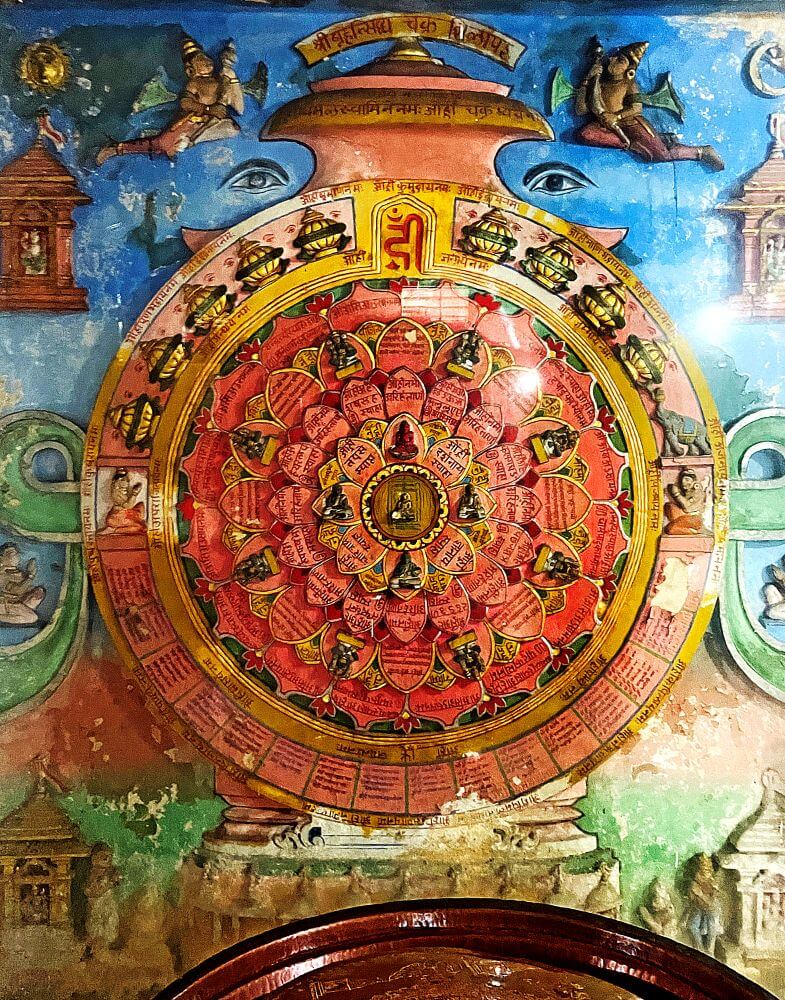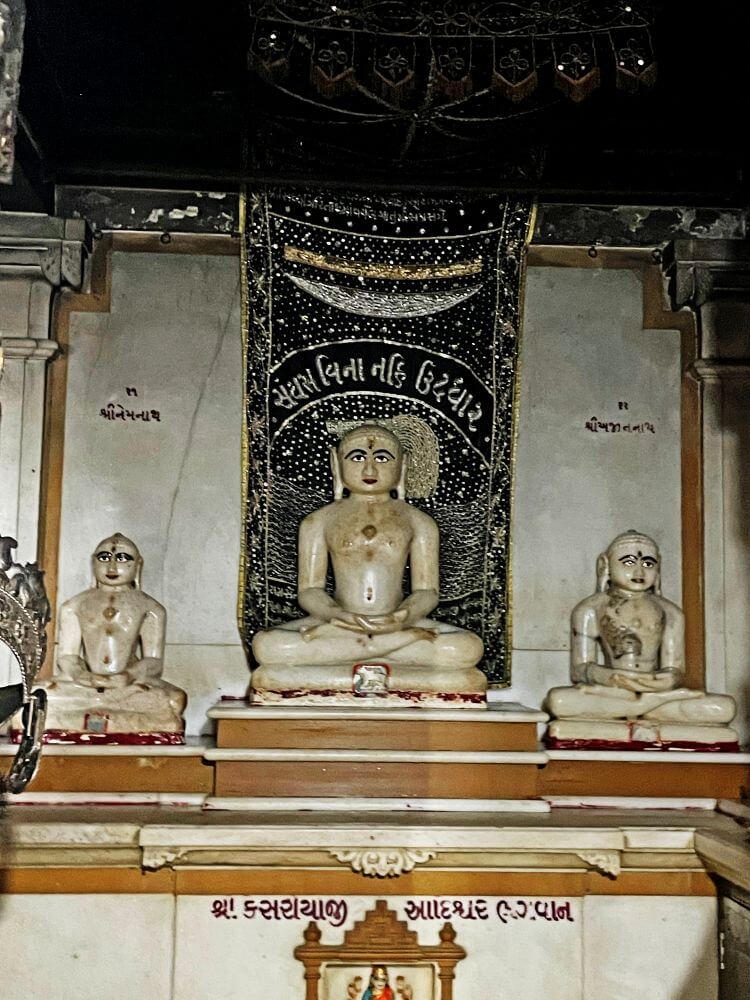
Dabhoi, historically known as Darbhavati, is a city of religious and historical significance in Gujarat. It is mentioned in several ancient Jain scriptures. Due to the presence of the Kalika Mata Temple, Dabhoi has long held the status of a pilgrimage center for both Hindus and Jains. The city is home to many Jain temples, among which the Pragat Prabhavi Parshwanath Jain Temple holds a special place. The temple houses the revered idol of Parshwanath, known locally as Darbhavati Parshwanath.
In the 8th century, Dabhoi was under the rule of the Chavda dynasty from Anhilwad (Patan). The last king of this dynasty, Samantsinh, had no heir and adopted his nephew Mulraj. However, in 942 CE, Mulraj overthrew Samantsinh and established Chaulukya (Solanki) rule. In the 13th century, Dabhoi came under the Vaghela dynasty, which claimed descent from the Chaulukyas. According to Dr. Hiranand Shastri, Director of the Archaeological Department of Baroda State, in his book ‘The Ruins of Dabhoi or Darbhavati’ (1940), King Veerdhaval of the Vaghela dynasty was the founder of Dabhoi Fort.
His Prime Minister was Vastupal and according to ‘Vastupal Charitra’ written by Jinaharsagani in 1308 CE, Vastupal’s  younger brother Tejpal was a valiant commander appointed by Veerdhaval. Due to frequent invasions, Tejpal fortified Dabhoi, turning it into a walled city. The same text mentions that Vastupal built 170 temples in Dabhoi. He also renovated the Vaidyanath Mahadev Temple and constructed a Jain temple facing it, installing statues of King Veerdhaval, his queen and Vastupal. However, these original idols are now lost.
younger brother Tejpal was a valiant commander appointed by Veerdhaval. Due to frequent invasions, Tejpal fortified Dabhoi, turning it into a walled city. The same text mentions that Vastupal built 170 temples in Dabhoi. He also renovated the Vaidyanath Mahadev Temple and constructed a Jain temple facing it, installing statues of King Veerdhaval, his queen and Vastupal. However, these original idols are now lost.
Dabhoi also holds significance in Jain history as the birthplace of Acharya Munichandrasuriji Maharaj and the place where Mahopadhyay Yashovijayji Maharaj attained enlightenment in 1687 CE. Among the prominent Jain temples in Dabhoi is the Pragat Prabhavi Parshwanath Jain Temple. In earlier times, there were wooden temples here  dedicated to Rishabhdev, Dharmanath and Munisuvrat Swami. Over time, these structures deteriorated and the local Jain community decided to rebuild them. In 1945, the community invited Acharya Shri Vijaypremsuri Maharaj to guide the restoration. After he gave his blessings, the construction of the new temple began, with the foundation ceremony held on Shravan Shuddha Ekadashi in 1945. On Margashirsha Shuddha Dashami in 1946, 35 Jain idols, including Mahayakshinis and other sacred images, were consecrated, along with the dhwajdand (temple flagstaff).
dedicated to Rishabhdev, Dharmanath and Munisuvrat Swami. Over time, these structures deteriorated and the local Jain community decided to rebuild them. In 1945, the community invited Acharya Shri Vijaypremsuri Maharaj to guide the restoration. After he gave his blessings, the construction of the new temple began, with the foundation ceremony held on Shravan Shuddha Ekadashi in 1945. On Margashirsha Shuddha Dashami in 1946, 35 Jain idols, including Mahayakshinis and other sacred images, were consecrated, along with the dhwajdand (temple flagstaff).
The main sanctum (garbhagriha) houses an ancient idol of Rishabhdev, believed to date back to 1423 CE. Alongside it is the idol of Darbhavati Parshwanath, associated with a miraculous legend. It is believed that Lord Parshwanath once appeared in a dream to a washerman (dhobi), revealing the location of a hidden idol. Following this dream, the washerman searched in the Oresang River, which flows between the villages of Sankhoda and Bagalpur, near Dabhoi. There, buried in the sand, he discovered the idol of Parshwanath, which was later brought to Dabhoi and consecrated in the temple.
The temple of Pragat Prabhavi Parshvanath is considered a beautiful example of Jain architecture. This temple is  situated in a large courtyard behind a high compound wall. The temple is divided into three parts. The upper part is known as Rishabh Vihar. The ground floor section is called Parshva Dharma Vihar and the section to the south above is known as Jambu Vihar. One part of it contains the Chandra Vihar. In the second Guru Mandir section, there is a Danguru Vihar and its open courtyard is called Muktiprasad Chowk. The temple has a total of three entrances. The main lion gate is known as Saraswati Dwar. The other two doors are named Gajdwar (Elephant Gate) and Laxmi Dwar.
situated in a large courtyard behind a high compound wall. The temple is divided into three parts. The upper part is known as Rishabh Vihar. The ground floor section is called Parshva Dharma Vihar and the section to the south above is known as Jambu Vihar. One part of it contains the Chandra Vihar. In the second Guru Mandir section, there is a Danguru Vihar and its open courtyard is called Muktiprasad Chowk. The temple has a total of three entrances. The main lion gate is known as Saraswati Dwar. The other two doors are named Gajdwar (Elephant Gate) and Laxmi Dwar.
The pillars, spires, as well as the outer walls of the assembly hall are beautifully carved. The external walls have beautiful sculptures of deities placed in dedicated niches. In the middle of the columns of the temple’s entrance hall, there are intricately carved makar toranas (crocodile arches), with beautiful sculptures of celestial nymphs (sursundaris) at the top. The door pillars of the assembly hall have images of doorkeepers carved on the lower side. In the inner part of the makar torana in the upper section of the door frame, there is an image of Lord Parshvanath, with images of two female attendants on either side.
On the walls of the assembly hall, there are two large relief panels installed – the Brihansiddha Chakra stone panel and the Brihatsurimantra stone panel. The domed ceiling of the assembly hall is also beautifully carved, featuring sculptures of celestial nymphs in various poses.
In the sanctum sanctorum of the temple, the idol of Pragat Prabhavi Parshvanath is installed on a high marble platform. This idol dates back to the Gupta period and is made of pale yellow stone. It is 33 inches tall and 24 inches wide. Here, Lord Parshvanath is seated in ardha-padmasana (half-lotus position), with a seven-hooded serpent holding a canopy over him. Besides this, the temple houses idols of Lord Dharmanath, Kasarayji Adishwar Bhagwan, Shantinath Bhagwan, Vasupujya Swami and Adishwar Bhagwan.



